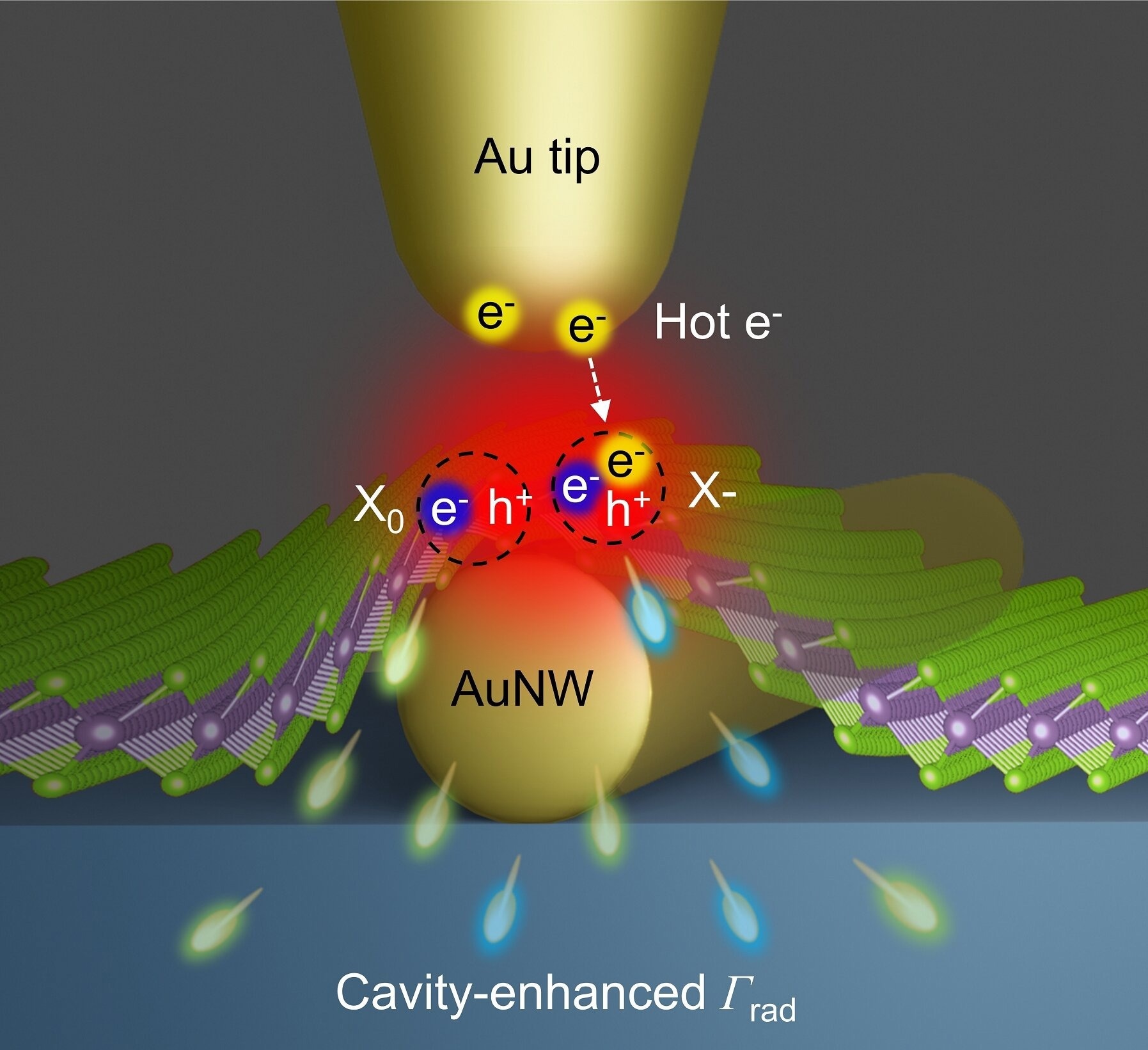A collaborative research team, led by scientists from POSTECH, UNIST, and Chungbuk National University has elucidated the production and manipulation of trions, offering valuable insights into their optical characteristics, paving the way for advancements in solar cells, nanophotonics, and flexible technologies.
 Typical applications of EES for the natural environment, energy utilization, human health, and functional regulation. Image Credit: Nano Letters (2023). DOI: 10.1021/acs.nanolett.3c03920
Typical applications of EES for the natural environment, energy utilization, human health, and functional regulation. Image Credit: Nano Letters (2023). DOI: 10.1021/acs.nanolett.3c03920
Their results were recently published in Nano Letters.
2D semiconductors have enormous promise for use in fields like solar cells, nanophotonics, and advanced flexible technologies because of their remarkable light properties per unit volume and tremendous flexibility caused by the thickness of their atomic layers.
The group’s main goal was to create light-emitting devices and optical applications by using the optical characteristics of 2D semiconductors, including the electron-hole pair formation and recombination processes.
Based on gold nanowires, the researchers created their own probe-enhanced resonant spectroscopy system to investigate real-time luminous characteristics and actively manage the interaction of excitons and trions.
Gold nanowires, a probe-enhanced resonance spectroscopy system, and a single layer of MoSe2, a 2D semiconductor, were combined by the researchers to produce a composite structure and a potent analytical platform. By doing this, scientists could determine the hitherto unknown principle of creating trions.
The researchers found that in 2D semiconductors, the multipolar mode of electric charge is important in causing the conversion of excitons to trions. They surpassed the light diffraction limit by achieving real-time study of nano-light characteristics using the probe-enhanced resonance spectroscopy system, with a remarkable spatial resolution of about 10 nm.
This made it possible to determine the underlying theory of trion formation and to provide reversible active control over the conversion of excitons to trions.
The gold probe further served as an antenna, concentrating light on a nanoscale region and producing high-energy thermocrons. To improve control over trion synthesis, the electrons produced by this technique were subsequently injected into the 2D semiconductor.
This discovery prompted the development of a brand-new “nano active control platform,” which transcends conventional measurement equipment and allows for real-time, ultra-high-resolution control over the state of matter.
Not only have we successfully controlled excitons and trions, but we have also identified the underlying principles governing their interaction with plasmons and thermotrons. We believe our research will present a significant breakthrough for researchers in fields utilizing excitons and trions, such as solar cells and photoelectric integrated circuits.
Mingu Kang, Department of Physics, Pohang University of Science and Technology
Professor Kyoung-Duck Park and Mingu Kang from POSTECH's Department of Physics, Professor Yong Doug Suh from UNIST’s Department of Chemistry—who also serves as Associate Director of the IBS Center for Multidimensional Carbon Materials (CMCM)—and Hyun Seok Lee from Chungbuk National University’s Department of Physics led the research team.
Journal Reference:
Kang, M., et. al. (2024) Nanoscale Manipulation of Exciton–Trion Interconversion in a MoSe2 Monolayer via Tip-Enhanced Cavity-Spectroscopy. Nano Letters. doi:10.1021/acs.nanolett.3c03920.